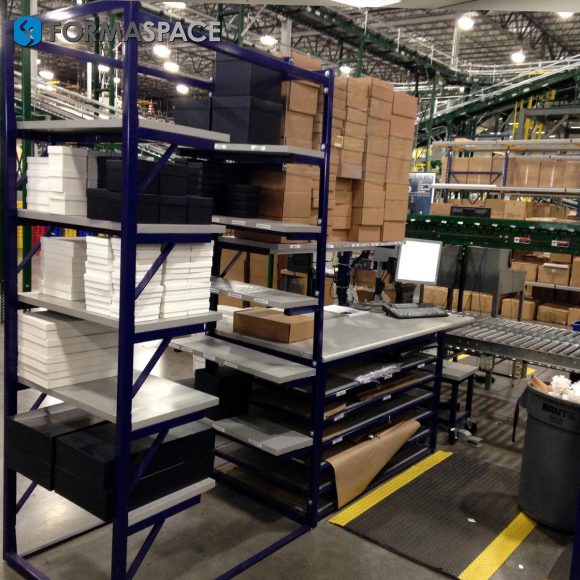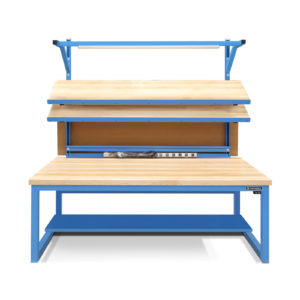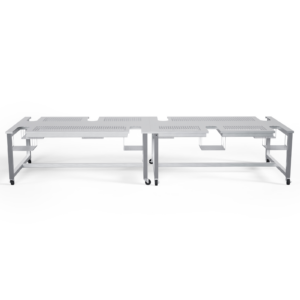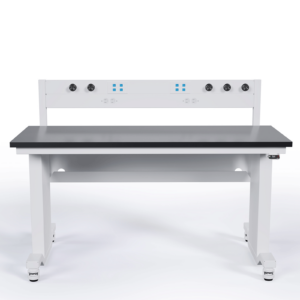Future Trends and Challenges Facing the Logistics Market
The Covid pandemic upended the world of cargo logistics in 2020. What can we expect in 2021?
We take a look at the ‘new normal’ in ocean container shipping, air cargo, intermodal transportation, truck fleets, logistics investments, and more to identify the top 10 key freight logistics trends affecting your business in 2021.

1. Covid Vaccine Efforts Shine a Positive Spotlight on Cold Chain Logistics
Public awareness of the supply chain logistics industry has reached an all-time high during the Coronavirus pandemic as consumers stewed over supply shortages – from critically low inventories of masks (and other PPE) to toilet paper and household cleaning products.
Fortunately, the logistics industry has found an opportunity for redemption – thanks to its massive efforts to deliver Covid vaccines across the US – and across the world. The first two US-approved vaccines from Pfizer and Moderna have been especially challenging for the logistics cold chain as these two products must be kept at the equivalent of ultra-low dry ice temperatures.
2. eCommerce Boom under Threat of Stalling Out Due to Package Delivery Troubles
While vaccine deliveries remain a bright spot in the logistics market (for now, at least), there is major trouble brewing in the package delivery market.
Demand for home delivery has skyrocketed as more consumers have switched to online eCommerce purchases. With fewer customers coming into stores, big retailers have responded by leveraging their physical stores as local distribution centers, an omnichannel strategy known as “Buy Online Deliver From Store” (BODFS).
However, many big box stores, such as Home Depot, are facing major headwinds in pursuing efficient BODFS operations due to the unprecedented demand for package delivery, which has led to skyrocketing freight forwarding costs and excessive home delivery delays.
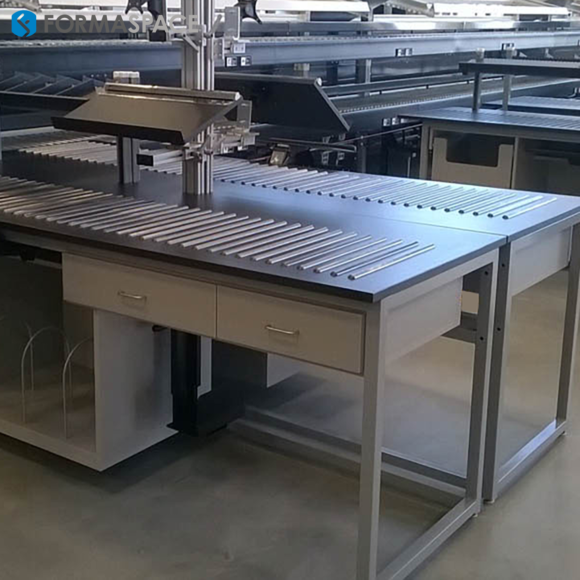
Without question, bad weather across much of the US during February (which shut down much of the country for up to a week) did not help the situation.
But fast-growing companies, such as the up-scale exercise bike manufacturer Peloton, recognize that continued delivery delays could curtail consumer demand; to the detriment of the bottom line. As a result, Peloton will invest an additional $100 million to ensure their air and ocean freight deliveries ship on time.
How did we get here?
In the next three trends, we’ll take a detailed look at how demand is outstretching supply for overseas container shipments, intermodal and truck freight forwarding, and air cargo deliveries.
3. Cost of Overseas Container Shipments Will Continue to Rise Dramatically
Overseas container shipping has suddenly snapped back from the record low demand levels of 2020.
But the recovery, driven in part by US consumer demand for outdoor patio furniture, work from home (WFH) equipment, and other large household items, has left trans-oceanic shippers unable to meet demand.
Container availability has been a critical issue, as many shippers, faced with the cost of paying for “blank shipments” of empty containers back to Asia during mid-2020, elected to temporarily “abandon” them in Western ports (particularly in Europe), and these have been slow to return to Asian ports.
Spot rates are skyrocketing, with some customers reporting price increases of 500% or more. For example, rates to transport a 40’ container from Asia to Europe have jumped from around $1,700 to nearly $8,000 in 12 months. American importers who sell to Costco, Walmart, and Bed Bath & Beyond report that 40’ containers shipped from Asia to California have jumped from $2,500 to $6,000 or $7,000.
It may take the remainder of the year for the capacity shortage to come back into balance. As a result, economic forecasters worry that these sky-high costs for overseas cargo shipments could put a damper on a rapid post-Covid recovery in 2021.
4. Intermodal Chaos at West Coast Ports and High Spot Prices for LTL Truck Shipments
The sudden resurgence of container shipments from Asia landing at US ports (especially in the ports of Los Angeles and Long Beach) has created logistical chaos that has slowed down intermodal shipping by truck and rail across the nation.
Many cargo ships have had to wait offshore, and port directors are urging ships to dock at other West Coast ports, such as Oakland.
Why have the ports been unable to cope with the sudden renewed demand?
One theory is that too many port workers are unable to return to work due to ongoing Covid infections.
Shortages are also affecting the trucking industry, which is also struggling to meet resurging demand.
Exacerbating the problem are small trucking operators that downsized their fleets (or left the business entirely) during the height of the 2020 Covid lockdowns reduced the capacity of the freight forwarding industry significantly.
Driver training for new truck drivers also ground to a halt during 2020, which has exacerbated the ongoing shortage of truck drivers. (New drug testing regulations for drivers may also be contributing to the shortage.)
Without the ability to accurately forecast future transportation demand, many freight forwarders are turning to last-minute transportation, and that’s proving to be expensive. Demand is up over 130%, and so too are the prices for hiring a big rig, which jumped up 22%, to a new high of $2.22 per mile. Shippers are also facing other threats as well, with cargo theft on the rise.
Economic forecasters feel that these current high spot prices for LTL (Less-than-Truckload)* shipments will ultimately drive increased prices for long-term contracts for TL (Full Truckload) freight forwarding.
*Known as “groupage” in Europe.
As a result, many freight logistics operators need to plan for an extended period of high shipping costs throughout 2021.
5. Crowded Airports Struggle to Cope with Overnight Air Cargo Shipping Demands
Air cargo also hit a record low in 2020, with the worst performance since monitoring began in 1990.
Yet, despite this, air cargo shipments were actually the high point in the aviation market, as airline passenger traffic deteriorated even further during 2020.
In fact, many struggling airlines began converted their fleets over to cargo flights, in many cases filling both the cargo hold below and the passenger seats above with packages.
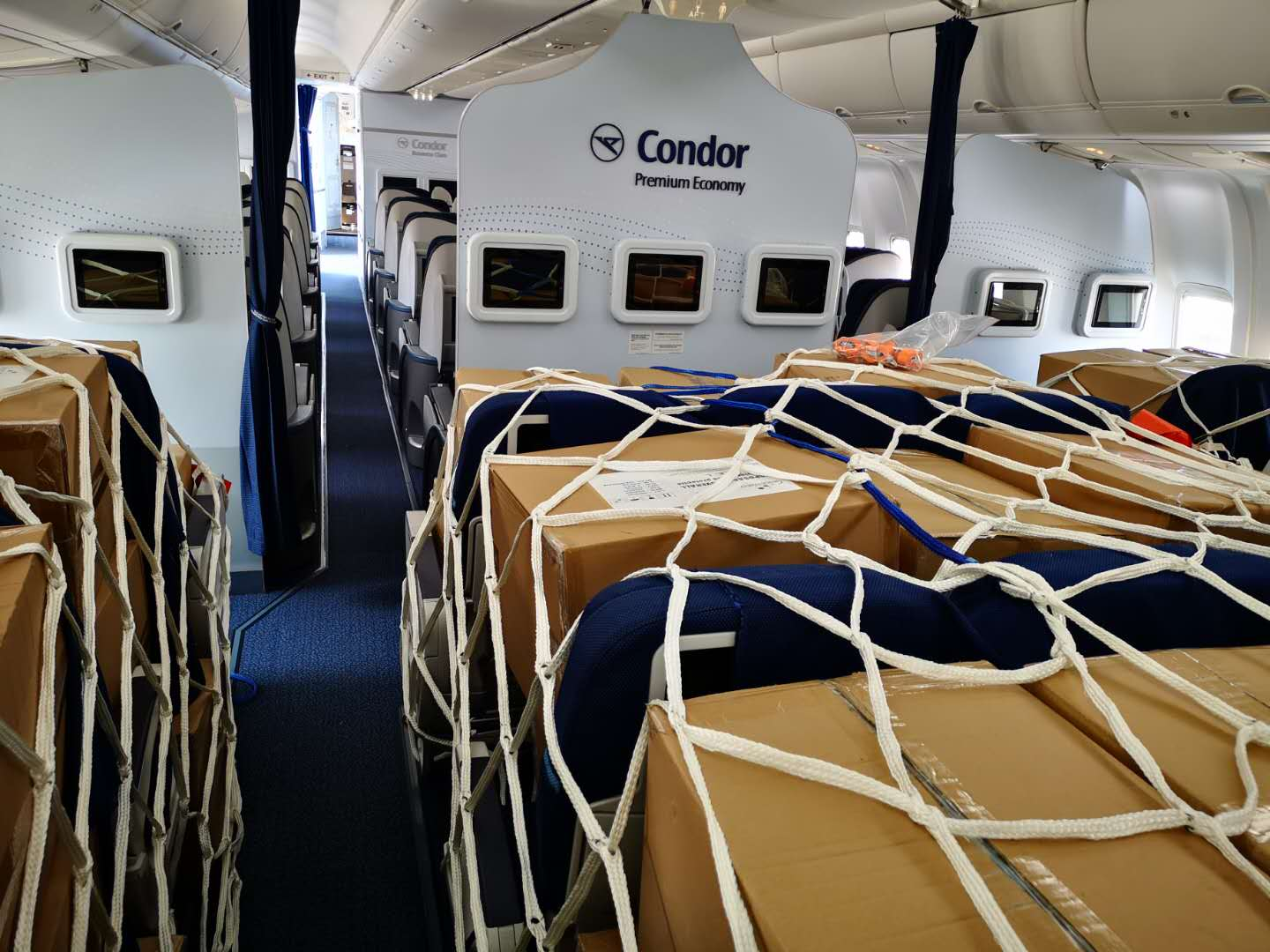
Demand for air cargo recovered sharply in the first months of 2021, as freight forwarders look for ways to get around delays in ocean container shipments and slow intermodal deliveries as well as meeting high demand for next-day delivery services.
The resulting increase in demand for air cargo services is putting intense pressure on American and European airport operations, however, as freight handlers struggle to keep up with the increased congestion on the runways and the tarmac.
Flight safety issues and aircraft retirements are also areas of concern for air cargo operators.
After a second United 777-200 aircraft lost a Pratt and Whitney engine over Denver in February (the first incident was on a Hawaii bound flight a year earlier, in February 2020), the airline grounded its entire fleet of 25 777-200s until the engine problem can be sorted.
Removing these Boeing 777s, long known as a workhorse among “freight dog” cargo pilots, further reduces capacity in an already tight air cargo market, particularly since airlines have been speeding up the retirement of their biggest jets (A380s and 747s) due to tumbling passenger demand during the Covid pandemic.
This puts additional pressure on air cargo operators, who ordinarily piggyback freight in the cargo hold of passenger flights.
Another long-term concern is that many airlines are opting to update their fleets with much smaller planes, such as the Airbus A220, which have limited freight hauling carrying capacity. (On the other hand, DHL is bullish on using the A321 as a future freighter.)
To compensate for the lack of airline freight capacity, air cargo companies have sped up orders to convert used passenger aircraft into freighters, but, so far, the demand for conversions is outstripping production capability, in particular for the popular Boeing 767 freighter conversions.
6. Big Mergers and New Investments in the Cargo and Freight Forwarding Industry
How is the freight logistics industry responding to resurging demand?
First, we are seeing major new investments in the form of mergers and acquisitions.
For example, Kuehne+Nagel, the Swiss-based company that tops Global Trade magazine’s list of freight forwarders, is expanding its Asian footprint with the purchase of freight forwarder Apex International Corporation, a deal that is estimated at $1.5 billion. The company describes it as their largest ever acquisition.
(Disclosure: Kuehne+Nagel is a Formaspace customer.)

Second, there is an increasing number of investments in logistics software systems, ranging from major new implementations to investments in new startups. One that caught our eye is Cargo One, a startup that recently raised $42 million to create an automated system that matches cargo shipments with air routes.
The third area of investment is in ships. The overseas cargo website G-Captain has identified $10 billion in purchases for new containerships, with over 200 ships now on order.
The fourth area is investments in logistics-related real estate projects. Cushman & Wakefield estimates report there was continued construction growth during 2020, with over 360 million square feet of industrial space in the construction pipeline, 90% of which is destined for warehouse and distribution use. Cushman & Wakefield reportedly forecast that this new building inventory will exceed demand later in 2021, which could offer some relief on lease rates for warehouses and distribution centers later this year.
The fifth area of investments comes from the recently passed Covid Relief Bill (officially the “American Rescue Plan”), which includes significant funding for transportation projects and wage support for transportation workers, including nearly $30 billion for transit systems; $8 billion for airports; $3 billion for aerospace manufacturing workers; $1.5 billion for Amtrak employees; and $15 billion for airline industry workers. In addition, US Transportation Secretary Buttigieg has promised additional transportation infrastructure funding in a future bill.
The sixth area of investment is from Amazon, which we’ll touch on in the next section.
7. Details of new Amazon Air Private Delivery Fleet Comes into Focus while USPS Rides the Struggle Bus
Amazon is making waves again in the overnight package delivery market by moving forward with its long-term plans to build out its own fleet of cargo aircraft.
(Disclosure: Amazon is a Formaspace customer.)
Freight aircraft with the smiling Amazon logo livery is nothing new; the company has wet-leased air freight operations for the last five years. But Bloomberg reports the company is now getting serious – by buying 11 used Boeing 767-300 planes from Delta and 4 from Canada’s WestJet Airlines Ltd.
Analysts point out that even without these new aircraft, Amazon Air is close to achieving its goal of operating an independent national air cargo network, with an estimated 140 flight operations each day, which is expected to grow to 160 by June.
The Motley Fool reports that air cargo operations will be centered at its new air hub at Cincinnati/Northern Kentucky International Airport (CVG), which is expected to open later this year.
Amazon is investing an estimated $1.5 billion into the 640-acre site, which will eventually grow to 3 million sq ft. Currently under construction is a nearly 800,000 sq ft package sorting facility, complete with surrounding concrete aprons big enough to service 20 aircraft simultaneously.
CVG is not the only airport that Amazon will use for cargo operations. The company also leases a 1.1 million sq ft distribution center at Fort Worth’s Alliance Airport, which was recently sold for $570 million to New York-based L&M Development Partners.

In contrast to Amazon, the Federal government’s US Postal Service (USPS) continues to struggle with service cutbacks and lingering questions about its future reorganization plans.
The 75th Postmaster General of the United States, Louis DeJoy, has attracted much controversy during his tenure as head of the USPS, particularly during the height of the pandemic in 2020 when his efforts to reorganize the sprawling organization resulted in a dramatic slowdown of mail deliveries.
Leadership changes may be coming. President Biden cannot replace DeJoy directly; however, he has appointed new members to the USPS’s oversight board, which will determine DeJoy’s ultimate fate.

8. Unionization and Job Classifications for Gig Workers
Our next freight logistics trend for 2021 is more of an unresolved question – how to classify the thousands of new “gig” workers that have joined the freight delivery industry in recent years to provide overnight package delivery and other rapid delivery services, including to-go restaurant meals.
This is a large class of workers now, ranging from Uber Eats delivery drivers to the thousands of new workers at Amazon packing packages at the company’s ever-growing portfolio of distribution centers.
There are at least two questions to resolve.
The first is whether “gig” workers are self-employed (e.g. independent business persons) or are they contract workers tied to their employers.
If it’s the latter, then freight logistics companies will have to pay higher amounts for wages, benefits, and other employee costs.
(This issue could also get drawn up into the argument over raising the federal minimum wage to $15. A study by economists found that when Amazon raises wages, so too do other local area employers.)
To date, the question is not fully resolved. California voters passed a proposition affirming that Uber drivers and the like are self-employed, while courts in the UK ruled the opposite.
The second question is whether these workers (if they indeed are employees) should choose to unionize or not.
A test case is now underway as the nearly 6,000 workers at the Amazon warehouse facility in Bessemer, Alabama, are taking part in a seven week main-in voting campaign to decide if they want to be represented by the Retail, Wholesale and Department Store Union (RWDSU). Voting ends March 29.
The implications of this vote loom large. President Biden has tweeted that workers need to be free to decide if they want to join a union or not.
If unionization were to move forward, it could affect the status of many of Amazon’s 1.3 million workers (although many in Europe are already unionized).
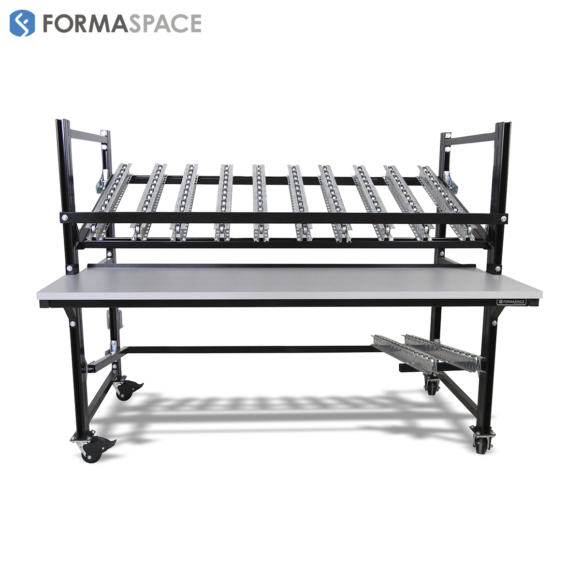
9. Will Robotics and Automation Replace Workers?
Another question facing the freight logistics industry is how much will automation change the demand for human workers.
We may soon have an answer.
Walmart recently introduced the Alphabot, a compact, low-slung robot that’s capable of performing picking operations for individual online grocery orders.

Walmart believes that the new Alphabot can help it grow the company’s same-day delivery grocery business while keeping labor costs low. The robot will be deployed behind the scenes in warehouse areas attached to retail stores.
Alphabot is part of a major new trend in 2021: the deployment of low-profile, autonomous robots commissioned by large corporations to meet their exact material handling needs. Tire manufacture Continental has recently introduced its own factory robot design, as have car maker BMW.
Not all logistics robots will remain earthbound, however.
Researchers continue to make advances in drone package delivery technology – by testing more powerful drones capable of delivering multiple small packages to a central delivery point within residential areas.
10. Business Resiliency and Sustainability
Challenging conditions over the last year have put supply chain logistics to the test.
The latest shock came in February, when a deep-diving polar vortex put Texas into a deep freeze, knocking out most of the power grid.

How are supply chain managers and logistics professionals responding?
A recent survey from Foley indicates that professionals are changing their logistics priorities away from minimizing lead times and reducing costs in favor of ensuring that supply chains are more resilient and reliable during crisis conditions.
Their Foley & Lardner LLP’s recent Global Supply Chain Disruption and Future Strategies Survey found that 70% believe that lowest costs is no longer the primary factor in sourcing; 60% of the respondents say they may shift away from just-in-time (JIT) manufacturing in order to maintain a reserve inventory in the warehouse, and 40% are considering dual or multi-sourcing strategies.
Given the current circumstances and the lessons learned over the past 12 months, these seem like sound strategies to follow.
Formaspace is Your Logistics Partner for More Efficient Material Handling
If you can imagine it, we can build it, here at our Formaspace factory headquarters in Austin, Texas.
We help companies with complex logistics operations, such as Apple, Dell Computer, Kuhne+Nagel, and GM, make their material handling operations flow better with efficient custom industrial furniture solutions that help workers be more productive while also keeping them safe with proper ergonomic work environments.
Find out more. Contact your Formaspace Design Consultant today to see how we can work together to make your next project a success.


